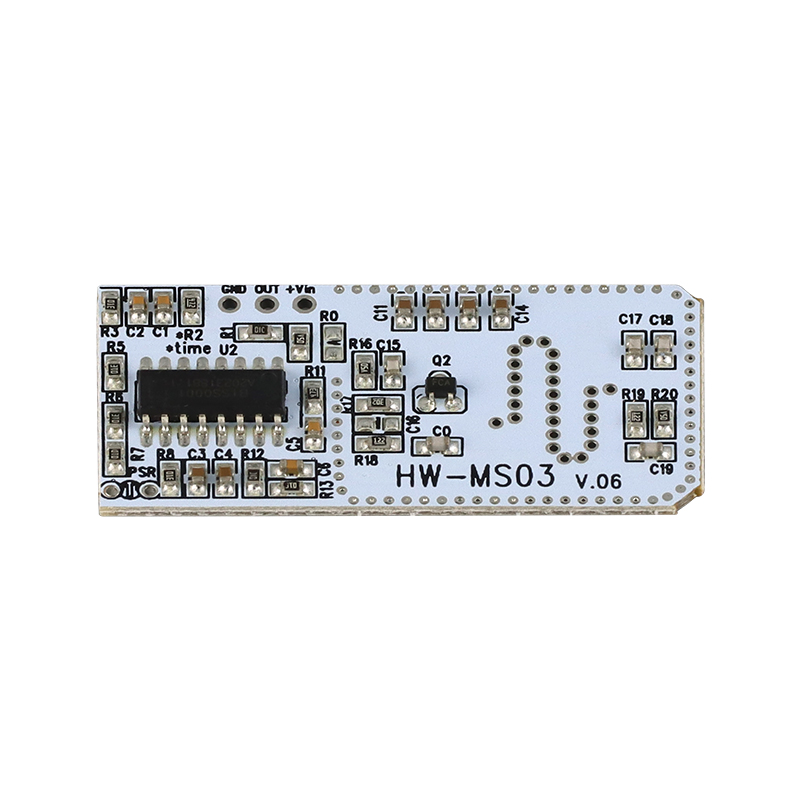 1004,West-CBD,No.139 Binhe Rd,Futian District,Shenzhen, China Post Code:518048
1004,West-CBD,No.139 Binhe Rd,Futian District,Shenzhen, China Post Code:518048
 +86-18682200597
+86-18682200597
 sales@szhaiwang.com
sales@szhaiwang.com
 1004,West-CBD,No.139 Binhe Rd,Futian District,Shenzhen, China Post Code:518048
1004,West-CBD,No.139 Binhe Rd,Futian District,Shenzhen, China Post Code:518048
 +86-18682200597
+86-18682200597
 sales@szhaiwang.com
sales@szhaiwang.com
source:Industry News release time:2022-04-25 Hits: Popular:Infrared sensing module

1. Introduction to NTC thermistor
The full English name of NTC is Negative Temperature Coefficient, which refers to the phenomenon and material whose resistance decreases exponentially with the rise of temperature.
2. The principle of NTC thermistor
NTC thermistors are generally made of metal oxides such as manganese, cobalt, nickel and copper as the main materials, and are manufactured by ceramic technology. These metal oxides are completely similar to semiconductor materials such as germanium and silicon in their electrical conductivity. When the temperature is low, the number of carriers (electrons and holes) of these oxide materials is small, and its resistance is high; when the temperature is high, the number of carriers (electrons and holes) of the oxide material is large, and its resistance is low.
3. Application of NTC thermistor in vehicle thermal management system
In automotive thermal management systems, NTC thermistors are commonly used as temperature measurement tools on the air side and medium side, such as evaporator temperature sensors, refrigerant temperature sensors, cab temperature sensors, and coolant temperature sensors.
Main parameters of NTC thermistor
R25: The resistance value of the NTC body at 25°C.
B value: material constant, which is a parameter used to express the range of resistance of NTC with temperature in the working temperature range, which is related to the composition of the material and the sintering process. In addition, the B value of NTC will be affected by temperature changes, so we usually select two temperature points on the curve to calculate. When indicating the B value, the selected temperature point should be marked (if there is no note, the default is B25/50), such as B25/85. The larger the B value, the faster the resistance changes with temperature, the smaller the value, the opposite.
NTC is called a negative temperature coefficient thermistor. It is prepared from a ceramic material sintered after Mn-Co-Ni oxides are fully mixed. It also has resistance value-temperature characteristic fluctuations while achieving miniaturization. The characteristics of small size and fast response to various temperature changes can be used as high-sensitivity and high-precision temperature sensors, and are often used in electronic circuits for real-time temperature monitoring and temperature compensation. As the temperature of the body increases, the resistance of the NTC will decrease nonlinearly, which is the characteristic of the NTC. In order to make better use of this feature, we need to clearly understand the basic parameters of NTC before application, which will be discussed in this article, hoping to help electronic R&D engineers in actual circuit design.
It refers to the time required for the thermistor element to produce a temperature change of 63.2% of the temperature difference between the initial temperature and the final temperature when the ambient temperature of the thermistor changes rapidly under zero-load conditions. When the ambient temperature of the thermistor changes from T1 to T2, the following relationship exists between the elapsed time t and the temperature T of the thermistor.
Read recommendations:
NTC thermistor temperature sensor for wall breaker
Understand the structure and working principle of thermistor in three minutes
Popular Recommended Products
PT100TSC010(902)
2021-11-27PIR Lens 7804-4
2021-12-096230 PIR lens
2021-12-17PND103F3950FTU102
2021-11-27PIR Lens 8731-1
2021-12-09HW-MS07 microwave sensor module
2021-12-078308-A PIR lens
2021-12-17Φ12mm size with metal case
2021-11-27HW-XC510 Microwave sensor module
2024-04-07Z005
2021-11-27PIR Lens 8201-9
2021-12-09Pyroelectric infrared detection burglar alarm in simulation technology.Human Body Sensor Vendor
2022-10-15Sensors for detecting the water temperature of intelligent toilets.Photosensitive sensor
2023-08-25Glass sealed NTC thermistor
2022-11-1918659 NTC temperature measuring element for lithium battery pack
2022-08-19Production process of NTC thermistor.Infrared Body Sensing Module
2023-07-19What is an NTC thermistor?
2022-05-18MF52 epoxy head temperature measurement NTC thermistor
2022-09-07The role and selection of thermistor in the switching power supply.Human Body Temperature Monitoring
2023-03-23NTC mechanical properties.SMD PIR IC Vendor
2022-06-13Foot bathtub and NTC temperature sensor.5.8G Frequency microwave module
2023-09-22
szhaiwang4@hotmail.com
+86-18682200597
sales@szhaiwang.com